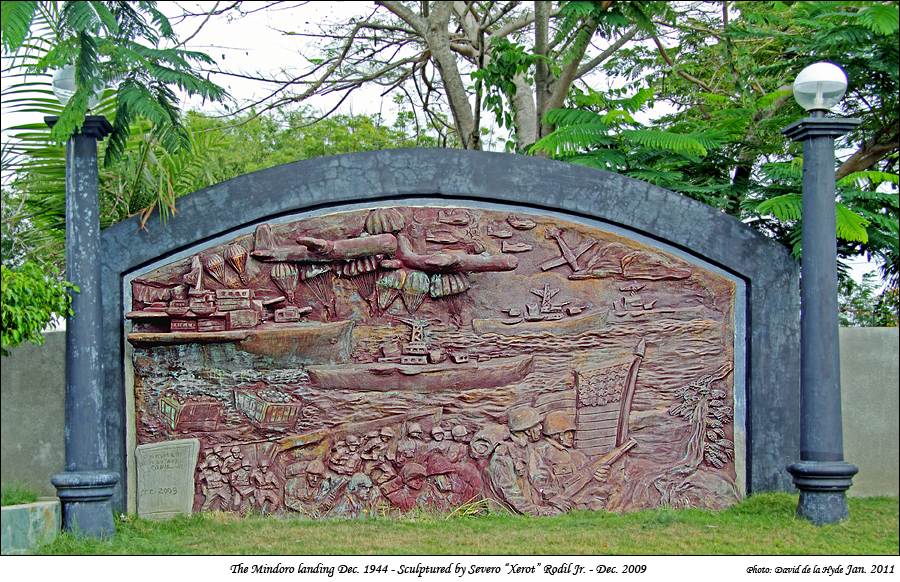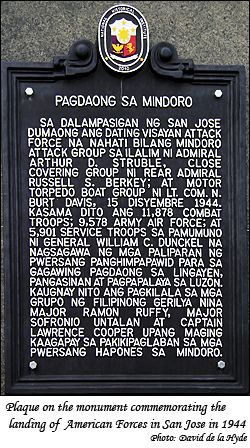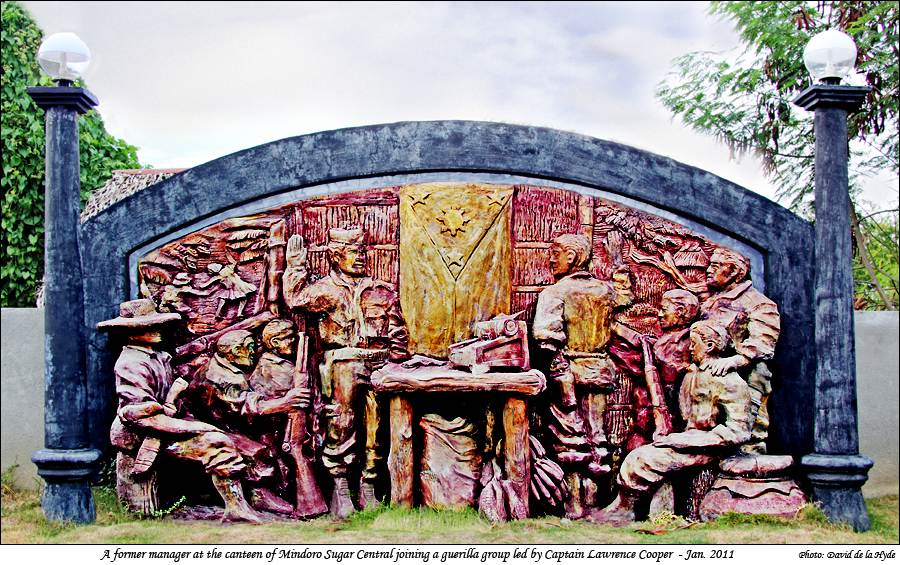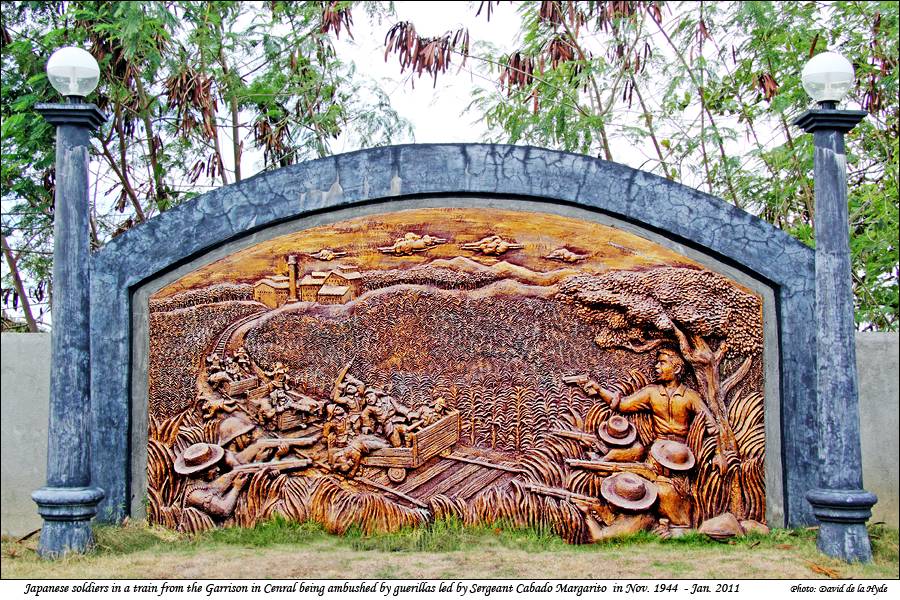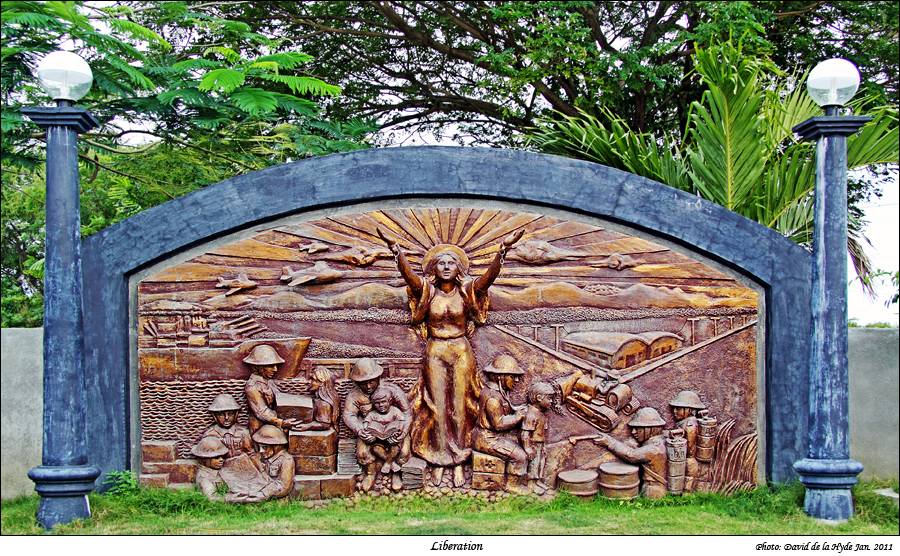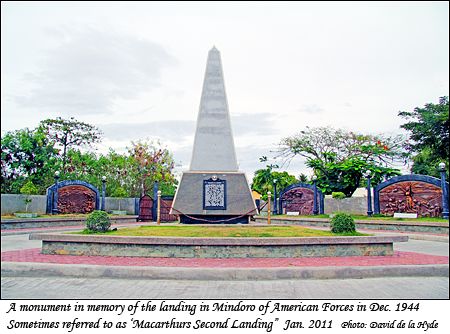
However after the Battle of Leyte Gulf Macarthur defied the Pentagon and went forward with plans to land in Mindoro.
Macarthur liked the location of Mindoro because control of it would help cut off Japanese Forces in Mindanao and the Islands of the Visayas from Luzon.
Once Mindoro was established as a base for American Naval and Military operations the Americans went to Lingayan in Luzon. From there they proceeded to defeat the Japanese in Luzon and free Manila.
Note: The National Historical/Mindoro Historical Society placed the plaque on the monument. They were probably involved with initiating the development of the interesting and attractive sculptures illustrating the historical events by Severo "Xerot" Rodil Jr.
The sculptures appear to have been formed by a copper alloy layer over a prepared plaster? substrate. In patches the white surface underneath is showing.
There were written inscriptions on 'paper' underneath the sculptures and I have used the information to caption the photos.
Reference: HISTORY OF SAN JOSE by Rudy Candelario. (http://sites.google.com/site/occidentalmindorohistory/historysanjose)
